Matador Network's Blog, page 1179
January 18, 2019
How to rent a car on Facebook abroad
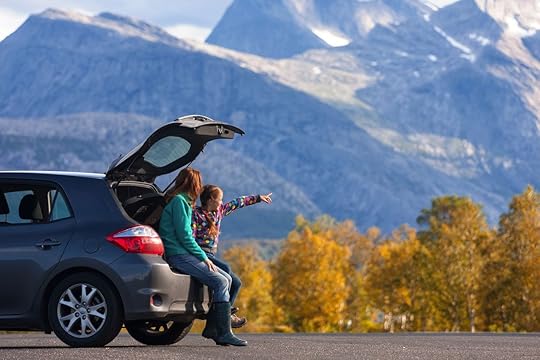
If you want a superb tourist experience in any foreign country — whether in Norway or Nicaragua — it’s best to rely on locals. Local business owners mostly sell to their neighbors, making them accountable and more inclined to offer reliable products. Local restaurants sell tastier food than imported chains, and local boutiques sell more unique merchandise than big chain outlets. Locals even rent better cars for cheaper prices — but the car-renting locals are not as easy to find. Here’s how to do it.
Don’t look for sleek websites.
If you’re planning your next road trip abroad, you may not find local rental agencies with sleek websites. Agency owners in many countries simply don’t have the time or skill to create a website to cater to an international clientele, a relatively small portion of their business. If you do find a website, you may not hear back from an automatic booking system that no one monitors or you may fear that Google Translate isn’t accurate enough to help you get the exact car for your needs.
But like everyone else, many of these same companies are on Facebook, and they’re worth seeking out. Simply search the name of the country or city where you want to pick up a rental along with “car rental” or “rental agency” and you will likely hit upon at least a few solid options.
You may default to Hertz or Avis or another “trusted” international brand, but these companies usually charge more for the same exact cars, sometimes even contracting with local agencies for their supply and upcharging foreign visitors. Rentals are cheaper if you go directly to the source. Plus, you can support a small, local business at the same time instead of filling Hertz’s coffers.
Local agencies may be more accommodating.
If you can only drive automatic transmission and are visiting a country where manuals are standard, if you’re looking for all-terrain vehicles, or if you have any other specific requirements, local agencies may also offer the selection you need. You won’t be competing with other tourists for limited supplies of specific cars, and local customers probably won’t want your automatic or off-roader anyway.
You may still be cautious about arranging details over Facebook, but opening up a direct conversation with someone at the agency, as opposed to submitting a request through an automated system, guarantees you’ll get the exact car you need when you need it. It’s like the difference between talking with a sales representative on the phone and wading through a robotic message machine. It’s just more efficient and reliable to talk to a real person.
Rental agency owners also have a lot of incentive to ensure you have a smooth experience. They are usually happy to rent to foreign tourists, sometimes even excited that their business has attracted interest from across the globe. Feeling pressure to act as a good host in their home country (or recognizing that a positive internet review in English could put them on the map with other visitors), they may even be extra accommodating. Need to keep the car an extra day? They may be able to move their schedule around for you. Arriving late to pick up the car from the agency? They’ll make sure someone is there to meet you in person after hours. Your car broke down? They’ll take care of it and help arrange a private car to get you to your destination.
Be sure to read the fine print.
All of that said, just because you made friends over Facebook, doesn’t mean you can let your guard down when dealing with an unknown company. Try to find third-party information about the agency. Once you do secure a car, be sure to examine the contract closely before signing, examine the vehicle thoroughly for damage before taking it from the lot, and watch out for other hidden scams like bogus cleaning fees that aren’t in the contract.
If nothing else, Facebook serves as a great way to find agencies that wouldn’t otherwise make the first page of Google. Whether you want to save a buck, support a local business, find just the car you need, or finally fulfill your dream of befriending a rental car dealer in a faraway land, Facebook is the place to go. 

More like this: Are rental-car companies doomed?
The post Facebook is secretly the best place to rent a car abroad appeared first on Matador Network.

Local restaurants improving airports
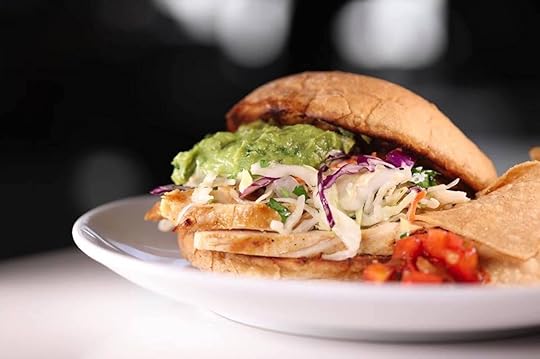
For decades, airport food choices were dismal. Your options basically came down to greasy chains or peanuts on the plane. That stayed true even as people in the US started to care more about where they ate and where their food came from in the mid-1990s. But now airports are starting to catch up. Flight hubs across the country are bringing in local restaurants to give travelers a taste of the city without leaving the airport — and not just in fancy airport lounges.
Today’s travelers can get local beer and sausages in New York City’s JFK airport, Farmers Market meals in LAX, and eat their way around Phoenix’s most-loved restaurants in one terminal. Not to mention all airport Shake Shacks and great airport bars. The focus on food makes sense because people have to eat one way or another and airports force a captive consumer base. According to an Airports Council International-North America study, people spent $665 million on airport food.
Airports are the first and last impression people get of a city. Why not make it a tasty one? Local restaurants are a great way to highlight what’s outside the airport and can even encourage tourists to explore the city. Heather Lissner, the public information officer at Phoenix’s Sky Harbor airport, told Matador that Phoenix has a diverse food scene and Sky Harbor is “able to take a lot of that and put it in our airport to show people how fantastic it is.”
New York’s Rochester International Airport is another place using food to attract visitors. It underwent a multi-million dollar upgrade that finished in 2018, and Monroe County Executive Cheryl Dinolfo saw it as an opportunity to highlight the food the area does best. The airport installed a locally owned and operated concession called Taste of Rochester that serves what the town is best known for (including Rochester’s famous garbage plate). In all, 25 Rochester area restaurants and food-product companies are included.

Photo: Greater Rochester International Airport (ROC)/Facebook
“One of the best parts of our next-generation ROC Airport is the sights, sounds, and now ‘tastes’ of Rochester that visitors can enjoy,” Dinolfo tells Matador. “The Taste of Rochester restaurant offers 25 of our community’s most iconic foods, like Tahou’s Garbage Plates, Salvatore’s pizza, and Abbott’s custard, altogether representing over 1,000 years of combined service in the Greater Rochester area. We want visitors to experience what makes us special, and these local offerings help us showcase the spirit and vibrancy of our community and enhance our ability to attract new investment and more jobs to Monroe County.”
Good food took so long to get to terminals because it’s hard to do. Restaurants have to be open long hours every day of the year, and each worker — and all of the food — has to go through security just to start the day. Chefs and other food staff already have it hard enough working at a traditional restaurant, and all the added stresses just exacerbate issues. It’s all an easy recipe for extremely high prices and the risk of attaching a local brand name to food that might not be up to par.
The challenges can be worth the cost for businesses, though. Airports give restaurants name recognition among travelers who either already know about the city or are about to learn more when they venture out of the terminal.
To be realistic, though, most travelers probably won’t leave the airport unless at their destination or faced with a long layover. However, Dinolfo joins many other officials in hopes that by spotlighting local foods they can stand out among competing airports. Rochester travelers could easily fly out of Buffalo or Toronto instead. They also hope maybe they’ll come back in the future, or as Dinolfo said, think to set up roots in other ways.
But the clear winner here? Travelers. Without even stepping foot outside of the airport, many get to taste authentic, regional foods without the work of planning an entire trip. If nothing else, regional restaurants in the airport slightly make up for the decrease of in-flight food and crazy flight delays. 

More like this: Phoenix has the best airport food in the US, and it’s not even close
The post Airport food is actually good now, at least at these US airports appeared first on Matador Network.

Best winter day trips near NYC
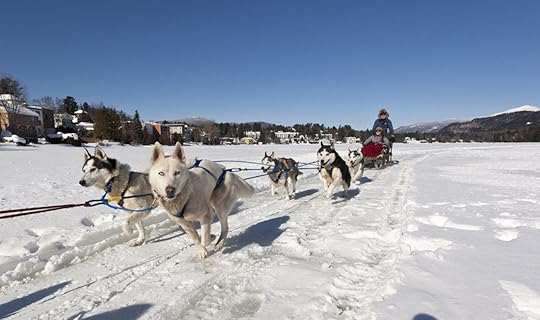
Winter in New York City can be brutal; temperatures can drop into the negatives, and you’re likely to see people resembling the Michelin man with all the layers they’ve packed on. While there are plenty of activities to do within the five boroughs during this time of year, such as outdoor sports or cozying up somewhere to avoid the cold, sometimes you just need to get away and maybe even see some real, clean snow.
Luckily, the Big Apple is in a great location with easy access to other places in the state, as well as those in the surrounding states. Some trips can be easily done within a day’s time, but others require an extra day or two if you want to have a more relaxed getaway. From New Paltz to the Poconos, here are the five best winter getaways from NYC.
1. Hunter Mountain, New York
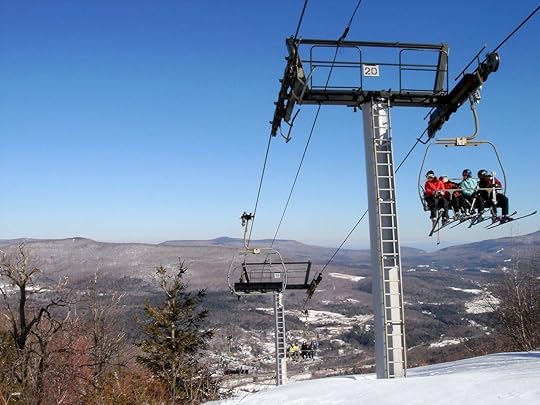
Photo: Vladimir Korostyshevskiy/Shutterstock
New York probably isn’t the first state that comes to mind when you think of a premier skiing location, but it’s certainly not lacking in that department. Hunter Mountain is a winter-sports destination that’ll keep you within state lines and prevent you from overspending by going to the likes of Utah or Colorado. It’s 1,600 feet above sea level with an equal vertical drop, and there 13 lifts and 67 trails with varying levels of difficulty. In addition to skiing and snowboarding, there’s also snow tubing.
It’s about two hours away by car and two and a half by bus. It’s close enough that you can do it as a day trip but far enough away that you can justify staying at the ski resort or somewhere nearby to make it into a multi-day affair. For day trips, there are tour companies that’ll have pick-up points in the city and will drive you to Hunter Mountain and back. Some, like this one from Sourced Adventures, also have the option to include a lift ticket and ski or snowboarding lessons in the price of whichever package you choose.
2. New Paltz, New York
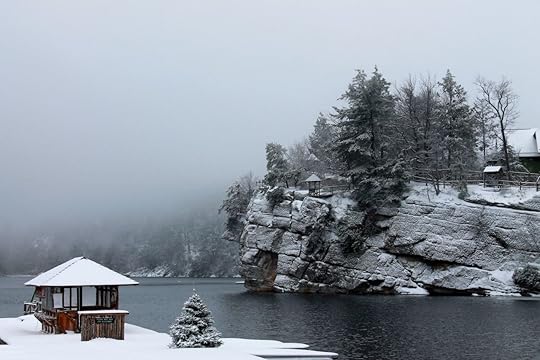
Photo: SergeyA86/Shutterstock
NYC’s chilly winter weather has nothing on upstate’s even colder temperatures. And while opting for a trip to a destination colder than the one you were in originally may not seem like the best idea, trust us on this one. Head up to New Paltz, a town with a population in the 14,000-15,000 range, and visit the Mohonk Mountain House. Founded in 1869, the resort has National Historic Landmark status and is housed in a Victorian castle with stunning views of the region.
Rooms are a pretty penny, starting at $300, but the number of daily activities and amenities available make it worth it. However, if the price is a deal breaker or you only want to head up for the day, Mohonk offers day passes. During winter and weather permitting, there’s ice skating in its open-air pavilion, cross-country skiing with over 30 marked trails, and snowshoeing. For things to do indoors, there are different forms of yoga, a heated pool, and a spa with an extensive list of treatments. By car, New Paltz is about an hour and 45 minutes away, and the minimum amount of time a train journey will take is two and a half hours.
3. Lake Placid, New York

Photo: ROOST
If you want a stress-free trip where you can go away for a few days and have a good variety of things to do but also have space for downtime, look no further than Lake Placid. Situated in the Adirondacks, this village is famous for having hosted the Winter Olympics twice — in addition to its natural beauty, of course. The actual Lake Placid and Mirror Lake that are close by are usually frozen over this time of year, so instead of the usual boating activities, residents and visitors alike can be found ice fishing, ice skating, playing ice hockey, and even dog sledding on the lakes. You can also take advantage of the mountainous terrain by going skiing, snowboarding, sledding, tubing, or ice climbing.
After spending some time out in the great outdoors, you can head to one of the many spas, such as the spa at Mirror Lake Inn and Element Day Spa and Salon, to soak in a hot tub or have a healing message. Learn some history at the Lake Placid Olympic Museum or visit an art gallery. With mountains encompassing the entire village and two large, beautiful lakes to its front, this resort village will make you lose all feeling of actually being in New York.
4. The Poconos, Pennsylvania
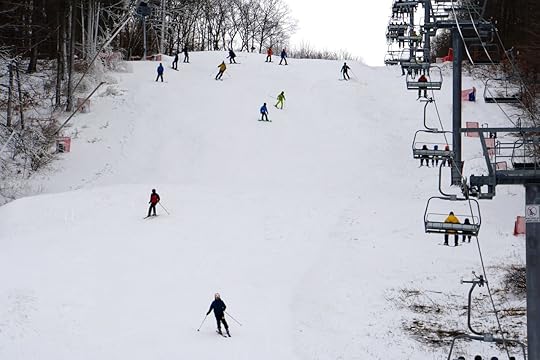
Photo: Khairil Azhar Junos/Shutterstock
Some areas in surrounding states are closer than actual places within New York state, so it’s also worth getting really out of town for your trip. The highly ambitious and early risers can attempt visiting the Poconos in a day, but it’s best reserved for a multi-day getaway, which will allow you some breathing room to relax and not have to stress about rushing. The area has a number of resorts and lodges, and come winter, many of them dedicate their spaces to the season. You’ll also find that all, if not most, come with an all-inclusive option so you can get the works included in your booking price.
Some, such as the Blue Mountain Resort and Camelback Mountain Resort, lend themselves more to winter sports like skiing and snowboarding with direct access to trails in their own backyard and are great if you want to focus your attention on hitting that fresh powder. Others, such as Kalahari Resort and Aquatopia at Camelback, provide a respite from the cold and have giant indoor water parks, allowing you to have fun in the water without freezing to death. The Poconos are a great option no matter who your companions are: family, friends, a significant other — it’s got something for everyone.
5. Canandaigua, New York
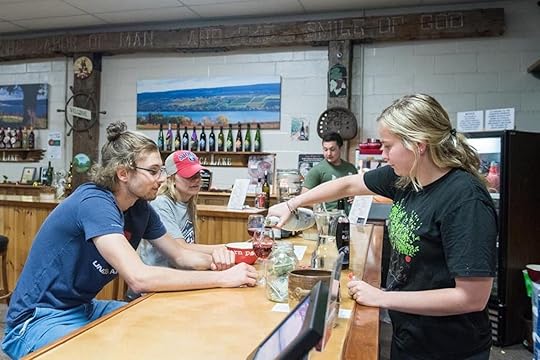
Photo: Canandaigua Lake Wine Trail/Facebook
This one will definitely require at least an overnight and a long drive, but if you put in the work, then you’ll be rewarded. Nothing warms people up like a nice glass of wine, and that’s what Canandaigua is well known for. One of the most northwestern towns in the state, and in the Finger Lakes region, it’s a little under an hour away from Lake Ontario, a body of water that’s shared by Canada on its opposite end. Like most towns this far upstate, there’s a wealth of winter sports; the renowned Bristol Mountain, with over 150 acres of skiable terrain, can be found just 20 minutes away by car. In addition to 38 trails with breathtaking views, you can also take a zip-line canopy tour through the snow-covered treetops.
For those here for the wine, head on the Canandaigua Wine Trail. The trail boasts an impressive collection of wineries and breweries, but it’s also made up of shops, attractions, and restaurants, so you can accomplish a lot in one fell swoop thanks to the handy map on the trail’s website. It also provides a list of accommodations, with some closer to wineries like the Monier Manor bed and breakfast and the Naples Hotel and others like the Holiday Inn Express and Inn on the Main closer to the town center. 

More like this: Where to volunteer all over NYC this winter
The post The 5 best winter getaways from New York City appeared first on Matador Network.

Glow-in-the-dark ramen shop
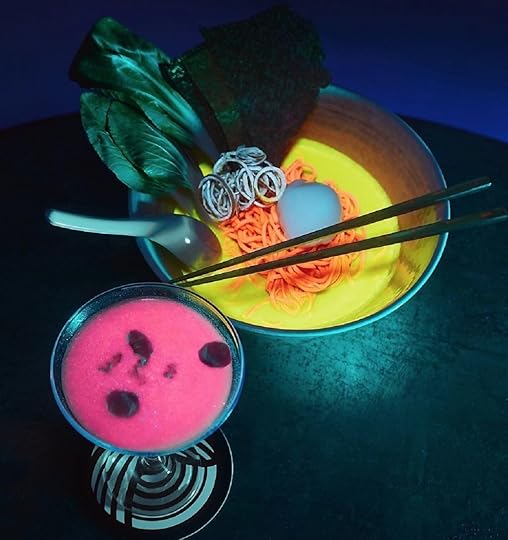
This ramen shop looks like a scene from your strangest post-nuclear disaster dream, but with tasty food. Nakamura-ke, a glow-in-the-dark restaurant experience, will open in Atlanta, Georgia on January 30, giving guests a surreal dining experience.
The idea for Nakamura came to its creator, Ami Sueki, in a dream three years ago. The pop-up shop is designed to tell the story of the Nakamuras, a family of supernatural beings from Japanese folklore, who serve their fluorescent ramen in the underworld.
View this post on InstagramA post shared by 中村家 (@nakamura.ke) on Nov 28, 2018 at 9:08am PST
Nakamura-ke will be small, seating only about six guests at a time for one 30-minute meal. Guests will feel like they’re inside the folktale, being served glow-in-the-dark dishes and cocktails in a space with fantastical decor populated by guests from the underworld sharing tales — it’s dinner and theatre all rolled into one.
Sueki partnered with London design firm Bompas and Parr to create the luminescent food, using quinine and natural food coloring to produce the effect.
View this post on InstagramA post shared by 中村家 (@nakamura.ke) on Sep 27, 2018 at 12:34pm PDT
This glow-in-the-dark dining experience will set you back $75 per person. Tickets for the Atlanta opening, which runs from January 30 to February 16, are already sold out. In the near future, Nakamura-ke expects to come to Los Angeles, London, Miami, New York City, Tokyo, Seoul, Sydney, and Dubai. 
H/T: Insider

More like this: How LA’s San Gabriel Valley became North America’s best place for Chinese food
The post This glow-in-the-dark ramen shop looks deliciously radioactive appeared first on Matador Network.

January 17, 2019
Why you need to visit Valencia
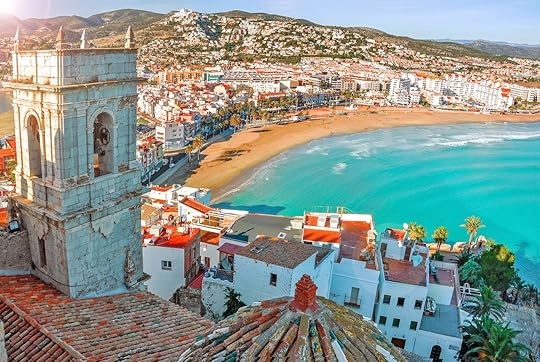
In Valencia, wide plazas connect narrow streets, ultra-modern buildings stand alongside medieval monuments, and exquisite food is sold on the cheap. Add to that a mild Mediterranean climate and endless beaches, and you’ll wonder why Valencia is still overshadowed by Barcelona. Sure, Barcelona’s cultural attractions and nightlife are legendary, but so are the crowds. For a less touristy and more authentic experience on your Spanish getaway, look no further than Valencia. Here’s what to do.
Valencia is large enough to get lost in but small enough to feel like home.
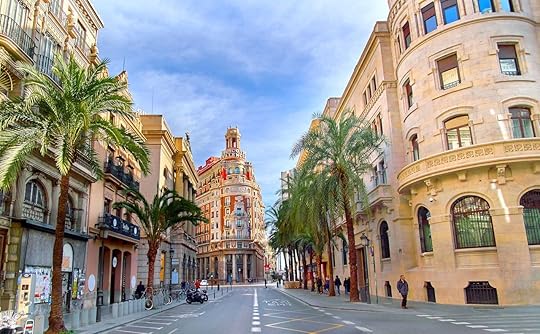
Photo: Razvan Ionut Dragomirescu/Shutterstock
With a population of 800,000, Valencia is the third-largest city in Spain. It’s one of the busiest ports in the Mediterranean, but you wouldn’t know that when walking down its streets. As you stroll through the Ciutat Vella, Valencia’s historic center, you’ll feel like you’ve stepped back in time. Google Maps is no match for the maze of narrow passages that crisscross around its main squares.
Once in a while, you’ll inadvertently stumble into a medieval palace or church and are sure to feel that same adrenaline rush that ancient explorers once felt. It’s easy to venture off the beaten path, but it’s also nice that there is always a lively plaza right around the corner. Valencia’s cozy quarters make you feel like a local, even if you’re just visiting for a weekend.
The city is looking to the future.

Photo: GagliardiImages/Shutterstock
Though there’s a medieval flair in the air, the space age is not a galaxy away. Valencia’s City of Arts and Sciences is the closest you can get to the year 3000, offering an experience sure to bring out both the nerd and culture hound in you. Designed by the acclaimed architect Santiago Calatrava, this complex of ultra-modern buildings has a state-of-the-art planetarium, opera house, and museum of science. You’ll also discover the largest aquarium in all of Europe, L’Oceanogràfic, which is home to over 45,000 marine animals. From its eccentric architecture to its mind-boggling exhibits, the City of Arts and Sciences is both awe-inspiring and enlightening.
Party like the locals during the festival of Las Fallas.
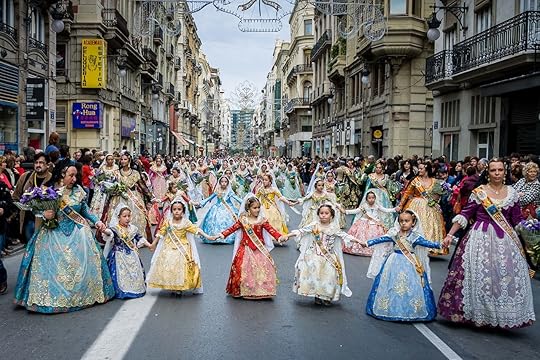
Photo: robertonencini/Shutterstock
Every March, Valencia welcomes the spring by transforming the streets into an open-air festival called Las Fallas. Originally a celebration for the patron Saint Joseph, Las Fallas has evolved into a 19-day fiesta that’s become the hallmark of Valencia’s cultural identity. Each day kicks off with a thundering wake-up call, as brass bands march down the streets. Madness ensues with noisy firecrackers setting off car alarms as people dressed in quirky costumes dance in the streets.
And this is just the morning. The fun continues into the afternoon when the live music, firecrackers, and rhythmic processions escalate to a fever pitch and you might just find yourself jumping into the fun. During the final night of Las Fallas, the celebrations reach their climax when paper-mâché creations, effigies, and parade floats are set ablaze. This fiery, epic ending underscores the explosive nature of these festivities. Las Fallas is so extraordinary that UNESCO deems it an Intangible Cultural Heritage of Humanity. You won’t find anything more engaging this side of the Edinburgh Festival.
Wander aimlessly through one of Europe’s largest urban parks.
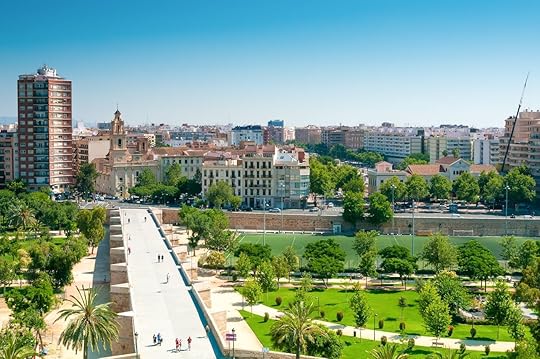
Photo: Lipskiy/Shutterstock
No city is complete without its green spaces. Spend some time exploring Valencia and it won’t be long until you come across the Jardí del Túria, one of Europe’s largest urban parks. Formerly a river notorious for flooding, the Túria was diverted south of Valencia and the riverbed left behind was converted into a park. Today, this greenway runs over four miles through the heart of the city. Along the Túria, you’ll find pretty much everything that makes a massive public park awesome: bike paths, gardens, fountains, soccer fields, exercise equipment, cafés, museums, and even a zoo.
The Túria also has the Gulliver Park, a playground that resembles Lemuel Gulliver, the fictional character from Jonathan Swift’s Gulliver’s Travels. If you fancy a pedal, there are plenty of public bikes to help you traverse the Túria. The paths are wide and well-maintained, making for a smooth ride. If you plan to stay in Valencia for an extended period of time, it’s advisable to get an annual Valenbisi bike card (only costs 29.21 euros, about $33). With its flat terrain and bike-friendly passages, Valencia without a bike is like Venice without a gondola. This enormous park helps make Valencia one of the most livable cities in the world.
The cuisine is uniquely Valencian.

Photo: Siim79/Shutterstock
As the birthplace of paella, Valencia has a dynamic food scene that is among the best in Spain. Valencia’s Mercat Central, or Central Market, is the best spot in town for indulging in local cuisine. As one of the largest markets in Europe, you’ll find just about everything here, from fresh fruits and vegetables to fish, meat, and sweet confections.
The local specialty in Valencia is the Paella Valenciana, a traditional rice dish mixed with rabbit, chicken, beans, and peppers. The vegetable and seafood paellas are equally popular. But Valencia isn’t just a city of rice dishes. Given that the region straddles the Mediterranean Sea, the catch of the day is another important element of the Valencian diet. For the fearless foodie, try the all-i-pebre, a local delicacy served with chunks of eel, potatoes, almonds, garlic, and paprika. Even if eel doesn’t entice you, you must try at least a bite during your stay.
Oranges are another staple of Valencian cuisine. From the city’s main train station to its tucked-away plazas, Valencia is lined with orange trees, and until the 20th century, citrus fruits were one of its largest exports. As a result, one of the city’s most popular cocktails is the Agua de Valencia, a mix of orange juice, sparkling wine, vodka, and gin. Agua de Valencia is the drink of choice during social gatherings for those over 16 years old (Spain’s legal drinking age, with limitations).
For a refreshing non-alcoholic beverage, the Valencians worship their horchata de chufa, essentially Valencia’s substitute for ice cream. This dish is a tiger-nut milk drink served with sweet pastries called fartons. Drinking horchata on a hot summer’s day is a Valencian past time — and an appropriate one as there’s no shortage of hot days.
Hit the beach to bask in the sun — not the crowds.
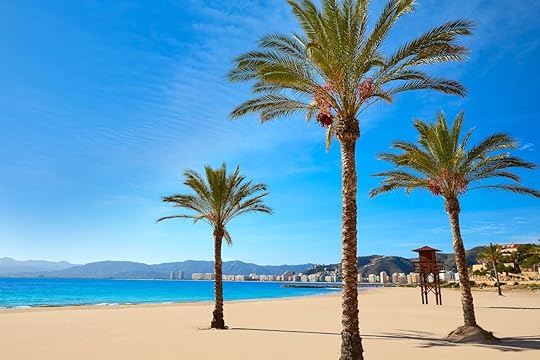
Photo: Tono Balaguer/Shutterstock
If you’re ready for some R&R after exploring and savoring the local delicacies, there’s no better way to spend your Spanish siesta than at the beach. Valencia has three beaches just 15 minutes from the city center, where golden sand stretches past the beachside cafés, restaurants, beach clubs, and volleyball courts that line the waters. If you don’t mind venturing six miles outside of the city, the beaches are even more secluded and untouched. You’ll be rewarded with an ideal spot to enjoy a glass of Agua de Valencia and watch the sunset. The only pressing thing on your mind will be the impending decision to hit the beach clubs or your hotel room bed. It’s a wonder why Valencia has stayed out of the limelight for so long. 

More like this: The 9 best food markets in Europe you need to visit
The post Valencia is the best city in Spain to escape Barcelona’s crowds appeared first on Matador Network.

Backpacking Superstition Wilderness
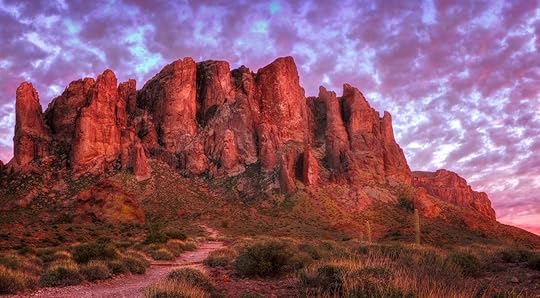
Arizona is home to some serious scenery: the Grand Canyon, Monument Valley, Antelope Canyon. While those are far from any major city, just an hour from Phoenix sits an untouched swath of pristine Sonoran Desert. The Superstition Wilderness, with its eerie red spires and lanky saguaro cacti, offers equally stunning vistas, is full of wildlife, and has miles of trails to explore. Follow these tips on how to backpack this stretch of desert.
Why the Superstitions?

Photo: meunierd/Shutterstock
Pristine Sonoran Desert habitat is getting harder to find in Phoenix. But within easy reach of the country’s sixth-largest city lie the Superstition Mountains. They’re populated by ring-tailed cats; coyotes; javelinas, which look like little wild boars; and even mountain lions. Originally designated as a federally protected wilderness in 1939, the area covers more than 160,000 acres. At its heart, the Superstition Wilderness holds the gutted core of an extinct volcano, which thrust dramatic rust-colored pinnacles into the sky. Canyons and mountain slopes are dotted with iconic saguaro cacti, some hundreds of years old.
The human history here is storied, too. There’s a legend about a lost gold mine that still intrigues treasure seekers today, and there are “superstitions” about hikers regularly disappearing here. Apache lore even holds that the mountains cradle the entrance to hell. As long as you don’t really get lost, just appreciate the mystique these stories lend to the place. Enjoy the dark skies as you stargaze from your campsite, and appreciate a quiet that’s hard to find in a sprawling urban area.
Established routes to explore

Photo: Jon Endicott/Shutterstock
Several popular trails and routes run through the Superstitions, including the popular Peralta and First Water trails. These are the heavily populated due to their easy access. But venture beyond these two routes and you’ll likely encounter few other hikers, even just five miles from your car. In fact, there are around 180 miles of trails threading through the wilderness, so it’s easy to build your own route by knitting together multiple trails, several of which form multi-day loop routes.
It’s hard to go wrong with just about any route here, but consider looping through Peralta Canyon where you can access a side trail that leads to the Fremont Saddle overlook of Weavers Needle, a popular rock climbing spot. Visitors are also drawn to Miner’s Needle, another striking rock formation. Red Tanks Canyon and the Whiskey Springs Trail both offer access to quiet stretches of backcountry with outstanding scenery and — an all-important element of desert backpacking — water access. Reavis Falls is a worthwhile spot, too. Here, a nearly 200-foot waterfall forms an improbable sight in the desert landscape.
What to bring
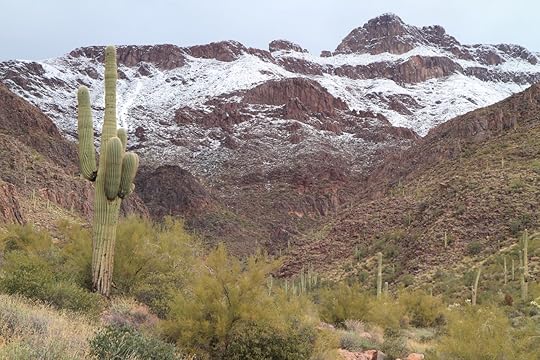
Photo: Bill Florence/Shutterstock
This being the desert, you’ll need to come prepared for extremes, especially when it comes to daytime heat and sun exposure. Don’t underestimate the cold, though, if you’re here in the winter. Freezing or close to freezing temperatures are common, as the mercury falls quickly once the sun goes down. In addition to your typical backpacking gear (tent, water filtration, cooking supplies, sleeping bag, etc.), bring lots of sun protection, like sunscreen, a brimmed hat, and lightweight long-sleeve shirts and pants.
Along with lots of water, consider packing a sodium replacement drink or dissolvable drink powder, which will help keep dehydration and hyponatremia at bay. Salty snacks, like potato chips, beef jerky, and pretzels can also help with this.
What to watch out for

Photo: Laurens Hoddenbagh/Shutterstock
Though located near a major urban area, the Superstitions are sneakily dangerous. This is a rugged wilderness where some 180 miles of trails range from very well-marked, well-trodden paths to remote trails that are easily confused with washes and game paths. Overnight visitors should equip themselves with a topographical map and navigation tools, and they shouldn’t plan to rely on cell phone coverage.
They’re called the Superstitions for a reason: This wilderness has a Bermuda Triangle-like effect on hikers, and people routinely get lost here. Whether it’s some sort of supernatural force at work, the lure of rumored buried treasure, or just the nature of these mountains, it’s important to take adequate precautions. If you’re uncertain about your abilities, local guide service Arizona Outback Adventures leads guided Superstitions trips that are perfect for backpackers of various ages and experience levels.
When to go

Photo: Joe Belanger/Shutterstock
The Arizona desert can be an unforgiving place. Extreme heat and sun exposure are typical during the day, so this area is best avoided during the height of summer. Winter daytime temperatures can be comfortable, but nighttime conditions can quickly turn cold. Water is tough to come by in any season. Be sure to pack in at least three liters per person — more if you’re traveling on a hot day — and plan your route around reliable water sources. Fall and spring are also fantastic times to visit. The weather is mild, and the water sources are reliable. In spring, the desert comes alive with bright colors and flowers.
Permits and regulations
Overnight visitors to the Superstition Wilderness do not need to buy permits in advance. Group size is limited to 15 people and 15 head of livestock, and the Forest Service requires you not stay longer than 14 days. Otherwise, practice Leave No Trace principles: tread lightly, respect the landscape and other visitors, and pack out your trash. 

More like this: Why you need to hike the Wind River Range in Wyoming
The post How to backpack Arizona’s eerie Superstition Wilderness appeared first on Matador Network.

Best things to do on Kauai
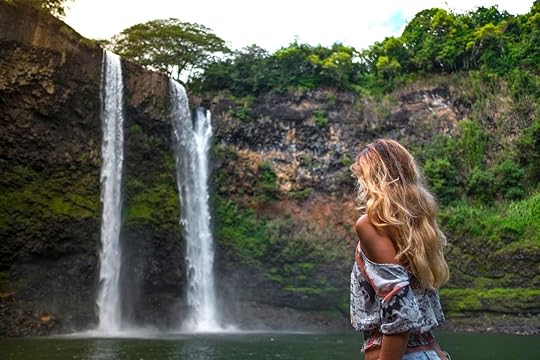
With so much that’s alluring about the Hawaiian Islands, it can be hard to choose which one island to visit. If it were up to us to decide your trip, though, we’d pick Kauai — the most underrated island in Hawaii and one of our favorite places to travel for 2019. It has a cool, low-key vibe and is an incredible places to surf. But maybe not everyone in your group surfs, or you aren’t sure what else there is to do. There’s in fact a lot to do in Kauai, and we’ve listed the 12 best options here — though that’s still only scratching the surface. The only thing missing may be the time to do them all.
1. Walk on the beach.

Photo: Pierre Leclerc/Shutterstock
You may plan to surf or snorkel, and we’ll get to those details below. Or maybe you’d prefer to read a book on the sand. Either way, you’ll hit the beach at some point, so we’ll introduce some of Kauai’s best up front.
On the north side, Hanalei Bay beach is perfect for a long walk. It comes complete with views of Makana Mountain, aka Bali Hai, the sleeping dragon. You’ll pass stunning beachfront houses, pine trees, and grassy expanses by Waioli Beach Park.
Beyond Hanalei, the Kuhio Highway would normally take you past several inviting beaches, ending at serene Ke’e Beach. Most of that highway is closed now, though, following a massive storm in April 2018. It’s projected to reopen this year, and we’ll let you know when it does.
On Kauai’s west side, Kekaha Beach Park seems to go on forever. It’s great for a long walk. Just decide where to turn around. Walk for three hours and you’ll eventually hit the dunes of Polihale State Park. Most visitors actually get to Polihale by ignoring their car rental restrictions and driving in on the rutted dirt road. The Polihale waves are treacherous, though, and the sun in this arid zone is relentless — so, if you do come, bring water and a beach umbrella.
On the south shore, Poipu Beach Park connects several sandy coves. One one end, Brennecke’s Beach has zero waves and is fantastic for little kids, while the main beach on the other end is packed with beginner surfers and boogie boarders.
2. Find a secret beach.
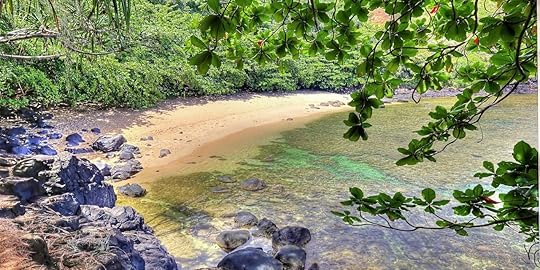
Photo: Joe West/Shutterstock
Kauai has several beaches that are harder to get to, which keeps most people away — and that’s a good thing. One of those is Gillin’s Beach, a rattling drive on a dirt road beyond Poipu. After you park in a clearing and walk through the scruffy woods, though, you’ll emerge onto a long, pristine beach lined by pines trees. The water’s rocky in some places but blue and crystal clear. It’s an idyllic place to hang out.
Ka Lae O Kaiwa Beach is near Allerton Garden. You’ll scamper on an overgrown footpath along the cliff. Just when you think you’re lost, you’ll see a stunning crescent-shaped beach. Local kids may be doing incredible tricks on boogie boards, but don’t regret that you didn’t bring your own board. This is a serious close-out wave that can do some damage to anyone but an expert.
In Princeville, Hideaways Beach is, well, hidden away. Once parked in the tiny lot near the St. Regis, a path leads down the escarpment. Broken steps, cracked railings, and loose ropes are all part of the descent. As above, just as you decide it’s too dangerous to go on, you’ll arrive at a slice of seaside paradise shrouded in tropical lushness.
3. Explore underwater.

Photo: Hiroyuki Saita/Shutterstock
If you went to Hideaways, hopefully you brought snorkel gear with you. Hideaways’ reefs are full of diverse fish. On the north shore, you can rent snorkel gear for $5/day from Hanalei Surf. On the south side, a good spot is the Beach House beach, right by a Boss Frogs snorkel shop. Admire the graceful sea turtles and a variety of tropical fish and, afterwards, consult your copy of the Boss Frogs fish sheet to identify which fish you saw.
If you’re PADI certified and want a more intense underwater experience, talk to the folks at Seasport Divers on Poipu Road. Kauai is no Palau, but it’s worth going under the surface at least once there.
4. Go for a hike.
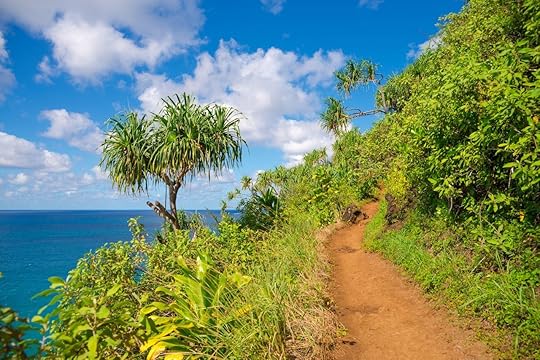
Photo: Alexander Demyanenko/Shutterstock
Kauai is one of Hawaii’s top hiking destinations. The most famous path is the Kalalau Trail, a 22-mile round trip that starts in Ke’e beach, which hugs the mesmerizing cliffs of the Na Pali Coast. Unfortunately, sections were washed away in the April 2018 storm. Park officials hope to reopen it sometime in 2019.
For the time being, you can approach the Na Pali Cliffs from the Waimea side. The Awa’awapuhi Trail is one trail that will bring you into the Na Pali area for fantastic views. Plenty of shorter hikes abound elsewhere. The hike to Wailua Falls Trail is an easy half-mile with a view of the lake and Wailua’s two side-by-side falls. On the south shore, the Maha’ulepu Heritage Trail takes you from Shipwreck Beach along bluffs to an overlook of Gillen’s Beach. It’s an easy morning trek that rewards you with lovely views you can’t see if you stay in town.
5. Ride a bike.
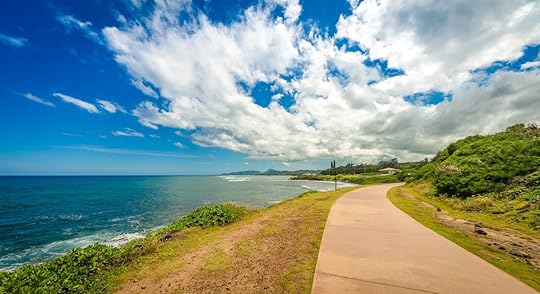
Photo: KevinClarkArt/Shutterstock
In Kapaa, rent beach cruisers for just $5/hour or $15/day. Head due north on the paved path. You’ll have ocean views for the whole three miles to Donkey Beach, where you can stop for a dip before your leisurely pedal back. The bikes come with baskets or bags, and you can even rent a trailer for your cooler full of sandwiches and beer.
6. Go kayaking.
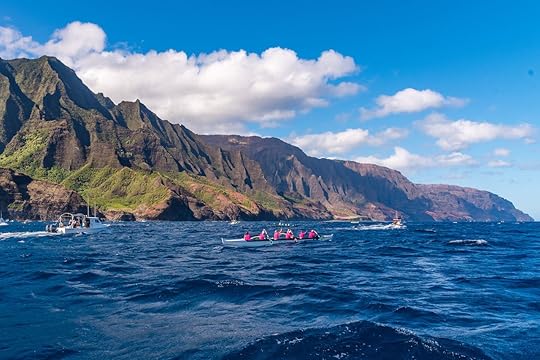
Photo: Melissa Burovac/Shutterstock
Kayak Hanalei rents kayaks right by the Hanalei River, which you can paddle downstream towards the sea. It’s a fun family excursion — as long as you’re aware that the adult in the boat will end up doing all the paddling.
Kayak Kauai runs intense, two-day excursions on sea kayaks to the Na Pali Cliffs. They used to run them from Ha’ena on the north shore. After the April 2018 storms, they started departing from Polihale and found that approach to be easier. This coming summer, Kayak Kauai will offer the trip from both the Ha’ena or Polihale launch points.
7. Take photographs from an overlook.

Photo: MNStudio/Shutterstock
Specifically, take photos of Waimea Canyon, a stunning 3,000-foot-deep and 10-mile-long cut of red earth dotted with bright green trees. The canyon views from the 3,600-foot-high Waimea Canyon Overlook are worth the trek. Afterwards, instead of heading back down, drive on Highway 550 to the Kalalau Lookout.
When it’s clear out, you’ll get fantastic views of the Na Pali cliffs from the Kalalau Lookout. Given the way the clouds hug the cliffs, though, we just can’t promise it’ll be clear out. Either way, your drive back down will probably have more visibility, rewarding you with sweeping vistas of Kauai’s west side and the sea beyond.
8. Play golf.

Photo: Chase Clausen/Shutterstock
You’ll find courses all over Kauai, most offering ocean views. Where you choose to play the holes may depend on where you’re staying. Some golfers consider the Makai Golf Club in Princeville one of the best in Hawaii. If you can play a round just before the sun goes down, it may be the most beautiful game you’ve ever played — bogeys, due to the sunset distraction, notwithstanding.
9. Get a massage.

Photo: Grand Hyatt Kauai Resort & Spa/Facebook
You don’t need to book at an expensive resort to get a good massage. The locals here at places like Sports Massage Poipu and Hanalei Bay Massage are surfers and athletes who know what your sore muscles need. That said, if you do want your rubdown in an elegant outdoor cabana, the Anara Spa at the Grand Hyatt resort is the largest spa on the island and pretty fantastic. Massages at the Halele’a Spa at the St. Regis Princeville are almost double what you’d pay with an individual local therapist — but the refined surroundings may make it worth it to you.
10. Eat like a local.

Photo: EQRoy/Shutterstock
You won’t have any trouble finding good food in Kauai. Breakfast and lunch options on the South Shore include the Little Fish Coffee shack and the kitchen at Living Foods. Hanalei has the Hanalei Bread Company, as well as great dinner options at Bar Acuda and The Dolphin Restaurant.
But if you want to eat like the locals, then try a daily lunch special from one of the food trucks in town. Or go to the Koloa Fish Market near Poipu, the fish shop behind the Dolphin Restaurant, or even the Ishihara Market in Waimea and pick up some incredibly fresh poke. And if you see some Spam musubi, try it. It tastes best after you’ve been surfing for two hours.
Don’t forget to get some shave ice, which you can find at the pink kiosk by the Poipu Beach House beach or in Old Koloa Town, Hanalei, and just about anywhere.
11. Have a fresh fruit juice.

Photo: Kauai Juice Co./Facebook
It’s impossible not to have a good smoothie in Kauai, with so many fresh tropical fruits to choose from. The juice shop in the Living Foods market is great as is Hanalei’s Aloha Juice Bar, a bright red shack by the Big Save parking lot. The Kauai Juice Co. has three shops on the island and also sells its elixirs in beautiful bottles to go.
Our favorite juice spot, though, is the Kalalea Juice Hale in Anahola, off the highway leading to Hanalei. Make a stop at the tiny orange house in the trees. Besides smoothies you’ll keep going back for, Kalalea makes a tasty açai bowl with housemade granola.
12. Go surfing.

Photo: jarvis gray/Shutterstock
If you don’t surf, first get a lesson. Surfing is risky. From rocks to other surfers, hazards abound, and a surfer who doesn’t know what they’re doing is a danger to others. Fortunately, there are plenty of surf schools. On the south side, try the Kauai School of Surfing. On the north shore, the Hawaiian School of Surfing is owned by surf legend Titus Kinimaka.
For some, surfing is the reason to come to Kauai. Kauai rivals Oahu for the quality of its waves yet has less of the crowds. On Hanalei Bay, beginners will appreciate the gentle waves and soft sand on the west side of the Hanalei pier. Down the beach, Pines and Grandpa’s have beginner to intermediate waves, depending on the swell.
For more action, paddle out to the Bowl where the clean right-hander is a dream. This spot is for advanced-intermediate surfers and up. The wave doesn’t pitch steeply, so you could manage it with a longboard — but the reef underneath is sharp. Fall on the take-off and you’ll be stuck in the impact zone as you get pushed further into the reef. Best to know what you’re doing.
The north shore waves work from September to April and are usually huge around New Year’s. In summer, there can be no swell at all — so head to the south shore, which is best from May to August. The main beach at Poipu is a sea of beginners on soft-tops, but you can paddle out to Waiohai. Just be sure to go on high or incoming tide. When Waiohai gets low, you may find your board thrashed by the reef and your feet pierced by urchin barbs.
The Garden Isle has plenty of other spots, but locals get understandably territorial. One no-go zone is Anahola, a steep, expert wave by the area reserved for locals of Hawaiian descent. Newbies can get themselves in trouble at Anahola, so leave it to the folks who live there.
If you do feel compelled to try other breaks you’ve heard whisperings about, go when they’ll be less crowded. The early afternoon is good since most locals hit the waves at dawn or after work. If you’re new to a spot, stay on the outside edge of the line-up and cede the waves to the pros. It may look like that surfer chick isn’t going to make it through a section, but she lives here. Don’t get in her way. She will make the section and look beautiful doing it. 

More like this: Why Kauai is the most underrated island in Hawaii
The post The 12 coolest things to do in Kauai appeared first on Matador Network.

Toto's 'Africa' in the Namib Desert

If you think this song is overplayed now, try spending a few days in this Namibian desert. Toto’s “Africa” was released in 1982 and has since become a pop culture phenomenon, inspiring several covers and remixes. The song is a staple at many nightclubs and live music venues — not just those that specialize in ‘80s music. Now it’s a staple of a much more authentic, natural environment too. German-Namibian artist Max Siedentopf has created a sound installation called “Toto Forever” in the Namib Desert, featuring a speaker system that will play Toto’s “Africa” on a loop for all eternity.
Siedentopf told CNN he “wanted to pay the song the ultimate homage and physically exhibit ‘Africa’ in Africa.” The installation is set up in an undisclosed location in the 1,200-mile-long Namib Desert. According to Siedentopf’s website, the installation consists of “[six] speakers which are attached to an MP3 player that only has one song on it — Toto’s Africa. The song is put on a loop and the installation runs on solar batteries to keep Toto going for all eternity.”
On the west coast of Southern Africa, the desert is around 55 million years old, which Siedentopf believes makes it the perfect spot for his work. The artist claims the work isn’t intended to make any kind of political or cultural statement but rather that it’s “supposed to look more at the lighter side of things and everyone should be able to enjoy it.”
If you want to visit the installation, however, you might be trekking through the desert for some time. Refusing to reveal the exact location of the speakers, Siedentopf says it’s “like a treasure that only the most loyal of Toto fans can find.” 
H/T: CNN

More like this: 25 life-changing experiences in Africa you need to have before you die
The post Installation in Namib Desert to play Toto’s ‘Africa’ for all eternity appeared first on Matador Network.

World’s loneliest frog found a mate

Dubbed the “world’s loneliest frog” because scientists thought he was the last of his kind in the world, this Bolivian frog named Romeo has finally found a mate. Romeo, a Sehuencas water frog, has spent the last 10 years in isolation at an aquarium in Bolivia, but now scientists have discovered five more Sehuencas water frogs in a remote Bolivian cloud forest. The frogs, three males and two females, including Juliet, were captured in a stream, and scientists intend to breed and reintroduce them to the wild.
The five frogs discovered on the expedition are the first to be found in a decade. Teresa Camacho Badani, the expedition leader, told the BBC that while Romeo is really calm and relaxed and doesn’t move a whole lot… [Juliet] is really energetic, she swims a lot and she eats a lot and sometimes she tries to escape.”
Romeo was collected by researchers 10 years ago though he was not expected to spend the following 10 years alone. About a year ago he received widespread attention for his “search for a mate” and was even given a dating profile. Scientists hope that the capture of these five new frogs will stave off the extinction of the species.
Chris Jordan of Global Wildlife Conservation believes, “We have a real chance to save the Sehuencas frog — restoring a unique part of the diversity of life that is the foundation of Bolivia’s forests, and generating important information on how to restore similar species at grave risk of extinction.”
Once the new frogs are treated to protect against an infectious disease, Juliet will be introduced to Romeo in an effort to produce offspring. Right now, the meeting of Romeo and Juliet is the Sehuencas species’ only hope for survival. It’s too bad things would have never worked out between Romeo and George, the world’s loneliest snail, who sadly died earlier this month. 
H/T: BBC

More like this: 10 endangered animals to see (and save) before they’re gone
The post Romeo, the world’s loneliest frog, finally found a mate appeared first on Matador Network.

Amtrak giving away free train trips

They call it a “social media residency program,” but really, it’s a free trip across the country on incredibly scenic train routes.
Amtrak is looking to give a few travelers round-trip train tickets on long-distance routes for free, as well as $1,000 of pocket cash, as part of its #AmtrakTakeMeThere social media residency program. Applicants need solid writing, photo, video, and social media skills to document and share their journeys with their online communities, but Amtrak is clear: They want real people (creatives, introverts, families, survivors, retirees, etc.), not glitzy influencers, so we all have a chance.
The program is intended to create a relatable view of train travel — not one curated by professional travel bloggers. In a statement, Amtrak CEO Tim Griffin said, “Some of the best travel stories occur on our long-distance trains, and we are looking for travelers to share their real experiences.”
The specific routes have not yet been announced, but there are a variety of potential options, including journeys along the scenic Pacific coast, across the Rockies, and through the Sierra Nevada.
The opportunity is open to people of any background as long as they’re at least 18 years old and reside in the US. Applications will be accepted now through midnight on January 31. Winners will be selected by early spring. 
H/T: Insider

More like this: The 7 most glamorous sleeper trains in Europe
The post Amtrak wants to give you a scenic cross-country trip for free appeared first on Matador Network.

Matador Network's Blog
- Matador Network's profile
- 6 followers



